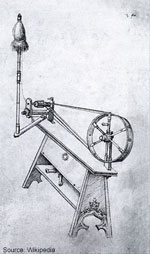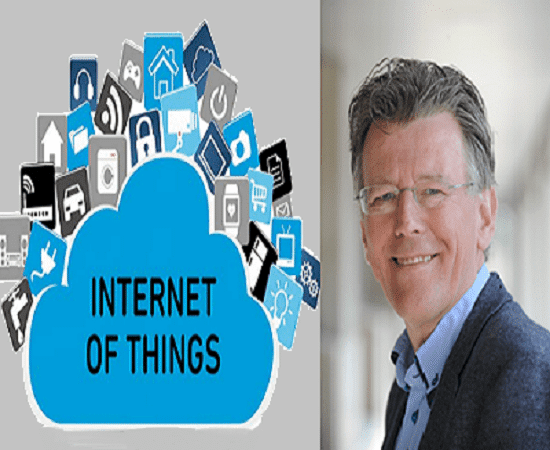The IoT market will grow from an installed base of 15.4 billion devices in 2015 to 30.7 billion devices in 2020 and 75.4 billion in 2025 as stated in a report by cdn.ihs.com.
As the IoT pushes automation to new heights, people will perform fewer and fewer “simple tasks.” Does that mean the demand for highly technical employees will increase as the need for less-technical employees decreases? What will be the immediate and long-term effects on the overall job market? Let’s take a look how the IoT will impact jobs and the labor market.

The obvious: Immediate, in-demand jobs and skills include high tech and data analytics
Millions of devices will come online over the next few years, and a considerable number of applications will emerge. It’s no surprise that tech companies — as well as large global companies across many industries — are busy creating IoT strategies to capitalize on this trend.
Yet many of these companies don’t have the know-how or in-house talent to realize their new IoT strategies. This is good news for the job market. The obvious skills and jobs that will be in high demand over the next 5-10 years, because of the Internet of Things are:
-
Circuit designers, microcontroller programmers, hardware designers, statisticians, app developers, network security developers and electrical installation engineers, as companies strive to implement IoT strategies.
-
Employees who can offer data analytics skills and vulnerability analysis, to gather and extrapolate data to improve applications and enhance security, as well as for reporting to executives and investors.
-
New ways of gathering data based on newly connected data points, along with algorithm development for improved machine learning so that all those newly connected machines can now teach and learn from each other. People with these skills won’t have trouble finding work in the IoT age
The not-so-obvious: Ushering in the next Industrial Revolution
But it’s important to note that, to date, overall employment hasn’t appeared to decrease, despite considerable pessimism about the loss of jobs to automation. Clearly, change is very painful for those impacted. But overall, where jobs are lost, other jobs are created. And by economic law, jobs with low value-add disappear and are replaced with jobs with high value-add. This is the “cleaning mechanism” through which economic growth and wealth creation are affected.
 The spinning wheel: How automation can create new employment
The spinning wheel: How automation can create new employment
To see how this cleaning mechanism works, let’s revisit an example from the distant past.
In 1412, the city council of Cologne, Germany, prohibited a local craftsman from producing a spinning wheel because it feared unemployment among textile manufacturers that used the hand spindle. The new spinning wheel enabled one worker to produce the amount of yarn previously produced by 200 workers.
Nevertheless, this technological progress didn’t create a long-term rise in unemployment. Why? Two reasons:
-
The new machine created new jobs in the “technology sector” (e.g., the production of the machines).
-
The falling price of textiles allowed consumers to buy more textiles and other goods, thus creating job growth in many sectors of the economy.
The spinning wheel is just one example of how predictions of technology-induced long-term unemployment have been proven wrong.
It’s also crucial to identify a common but incorrect assumption — that the amount and composition of work in the economy is fixed. Jobs may become mechanized and automated, but new employment opportunities also arise. (In the early 20th century, few would have predicted that today, employment in banks, hospitals or the entertainment industry would exceed employment of the entire agricultural sector.)

The next Enlightenment: Enabling new ventures
It’s also important to look at the bigger picture. When machines do the grunt work, humans are able to solve bigger problems or spend their time in more interesting ways. This shift may well enable the next level of creative culture — the next space race, or a new Enlightenment, perhaps?
So how might this play out with the IoT? Here are some examples how the IoT could enable new creative ventures:
-
Saving energy. The data gained in IoT applications on saving energy in a million smart homes could shed new light on how to create better technology that saves energy worldwide. (And creating that technology will certainly create new job opportunities along the way.)
-
Improving the worldwide food chain. IoT smart farming connected technologies — such as satellite/drone imagery, sensors, GPS mapping, wearable technology, algorithms and robotics — could combine to make the uncertainty and volatility of the worldwide food supply a thing of the past.
-
Water supply. IoT collaborations are already underway that aim to do no less than save the world’s water. IBM and Ireland’s Dublin City University have teamed up to focus on the university’s new sensor technologies, which could potentially improve key water-quality monitoring aspects while significantly reducing costs compared to current commercial technologies.
-
Healthcare. The IoT may save untold numbers of lives via wearables that issue real-time alerts for health emergencies, or sensors embedded in the body that administer medicine at precise times or even as needed based on collected data. Then there are drones that dispatch healthcare to war-torn or remote areas.
Short-term pain but long-term gain
So as we’ve seen here, technological progress results in two competing effects on employment:
-
As automation increases and replaces manual labor, overall employment is negatively affected as some workers must find new avenues of employment.
-
The “capitalization effect” positively impacts the job market as more companies enter industries where productivity is high — such as the spinning wheel example — which then leads to increased overall employment opportunities.
Nobody really contests the progress the IoT is bringing, but the old saying, “no pain, no gain,” seems to apply here as well. The challenge for society will be to avoid a situation where one group suffers all the pain, while another group takes all the gain. How to manage this balance is hopefully something we have learned from earlier revolutions.








